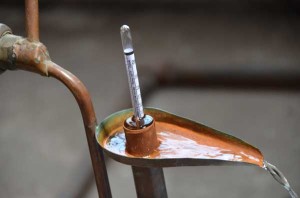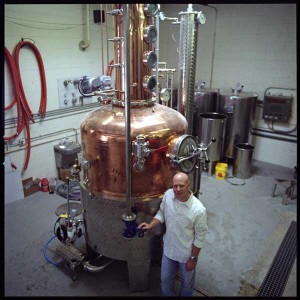Who Really Supports Craft Whiskey?
Contributed by on Apr 04, 2014
Zero readers love this post.
By Richard Thomas
Small business is as American as apple pie, so it might seem strange to ask who doesn’t support the very idea of a craft whiskey sector. After all, even the harshest criticisms of the new micro-distilleries haven’t gone so far as to condemn the sector wholesale.
Clay Risen probably came closest with his claim to have never tasted a craft whiskey that surpassed Jim Beam White Label, a statement so bizarre that even Chuck Cowdery quibbled with it. Steve Ury’s (in)famous blog entitled “Most Craft Whiskeys Suck” stopped well short of Risen, despite its sensational title, as Ury spared a few personal choices from his chopping block.
But is it as simple as that? While it is certainly true no whiskey blogger or writer has ever outright dismissed the craft whiskey boom as a terrible and fruitless thing, I find myself wondering if a few track records don’t add up to saying the same thing, only indirectly.
Challenges Of The Craft Sector
Starting and running a small business isn’t easy, as the statistics on start-up failure amply demonstrate. Opening a whiskey distillery is particularly challenging, even in a bull whiskey market, due in large part to a distillery’s long development arc. Jack Teeling once described it to me by saying a new distillery faces a “valley of death” in its third or fourth year, when it has a massive capital investment in plant and stock, but is only just able to sell something and still faces an uphill struggle to establish its brand.
In the United States, the very understandable and widely observed pressure to generate revenue has driven virtually all micro-distilleries to adopt one or more of the following measures: bottling and selling sourced whiskey; making white whiskey or moonshine, which unlike aged whiskey can go straight to the market; or making small barrel whiskey, which is ready in a matter of months rather than years.
It’s hard to overstate just how universal these responses to the very real business pressures of running a small distillery are. The “brewstilleries,” such as Town Branch and Ranger Creek, relied on one or more of these options for at least their initial period, and that was with the revenue from a brewery to lean on. Even Woodford Reserve, one of the biggest new distilleries of modern times and backed by the full weight of Brown-Forman, is rumored to have relied on sourced whiskey in its earliest days. Nobody wants to be sitting around for years paying overhead costs while making no money if they can’t help it, and there are painfully few examples of it truly being done that way.
Yet white whiskey, small barrel whiskey, and bottling have become the three most controversial practices in American whiskey today. They form a set of overlapping remonstrances in whiskey circles, with many complaining about at least one approach, some griping about two, and a few blasting all three.
The Contradiction
With the knowledge that even the best-funded American distilling projects go through a period where they must sell a product that isn’t homegrown, traditional straight whiskey, one begins to see what the doublespeak about the craft whiskey sector is all about. While no one condemns the craft sector by the front door, some do it instead through the back door by attacking everything about the standard business model for a new distilling company.
This dissonance begs the following question: if someone disdains white whiskey and scoffs at legal moonshine; if he declares all small barrel whiskey is lousy; and then he treats even reasonable whiskey sourcing issues as if they were part of a RICO investigation, just how much goodwill can that person really have for whiskey’s little guys?


